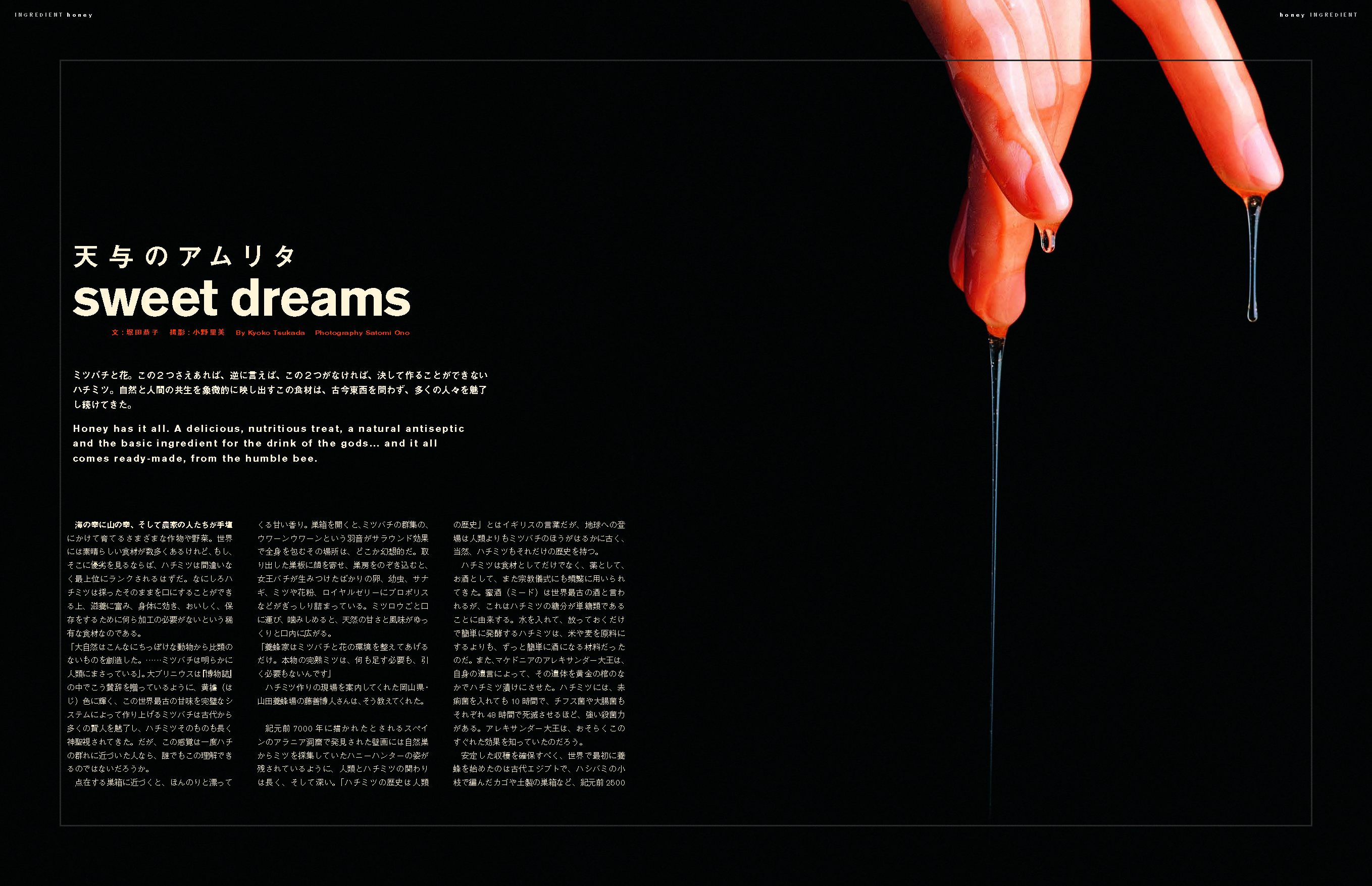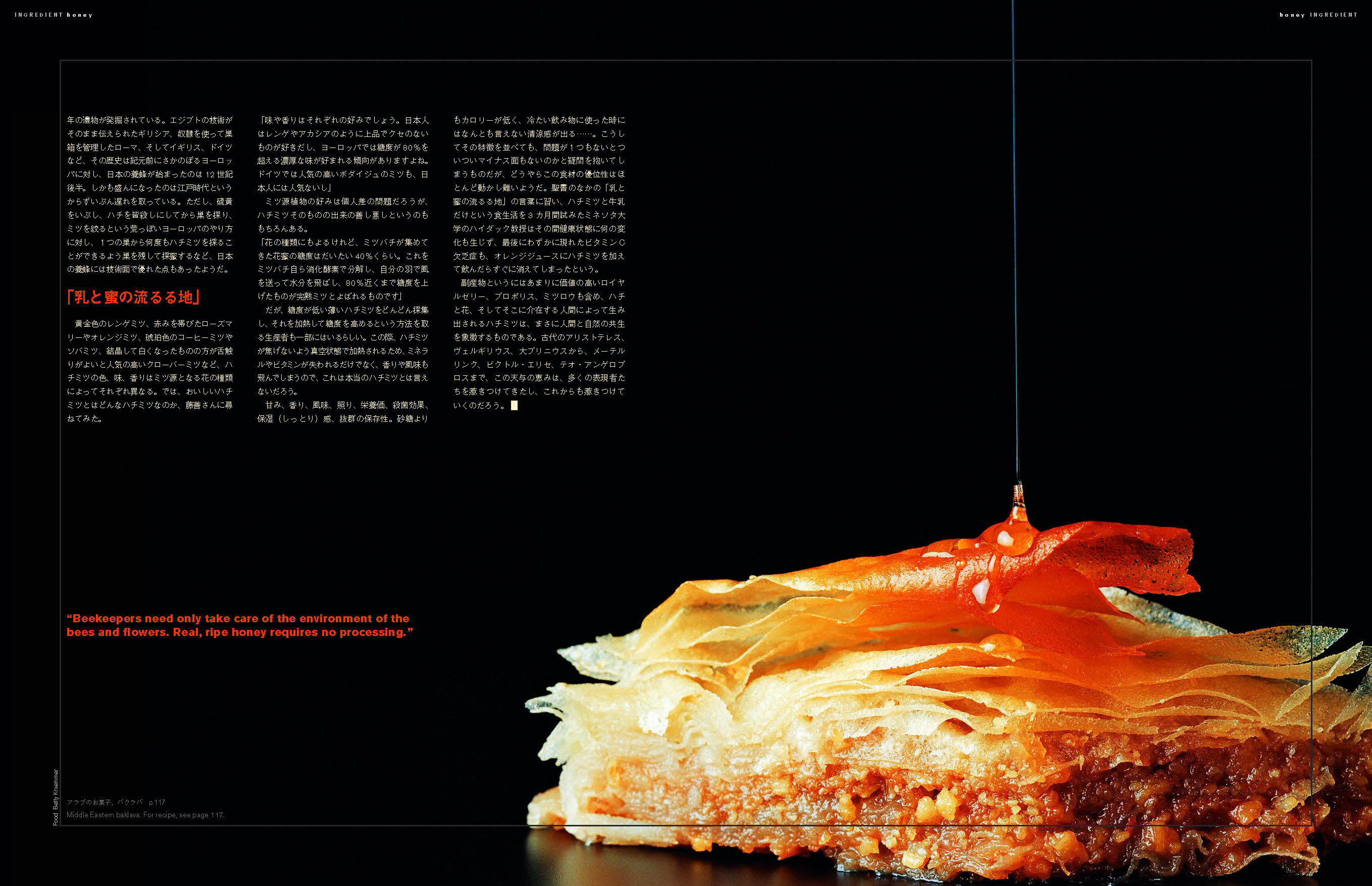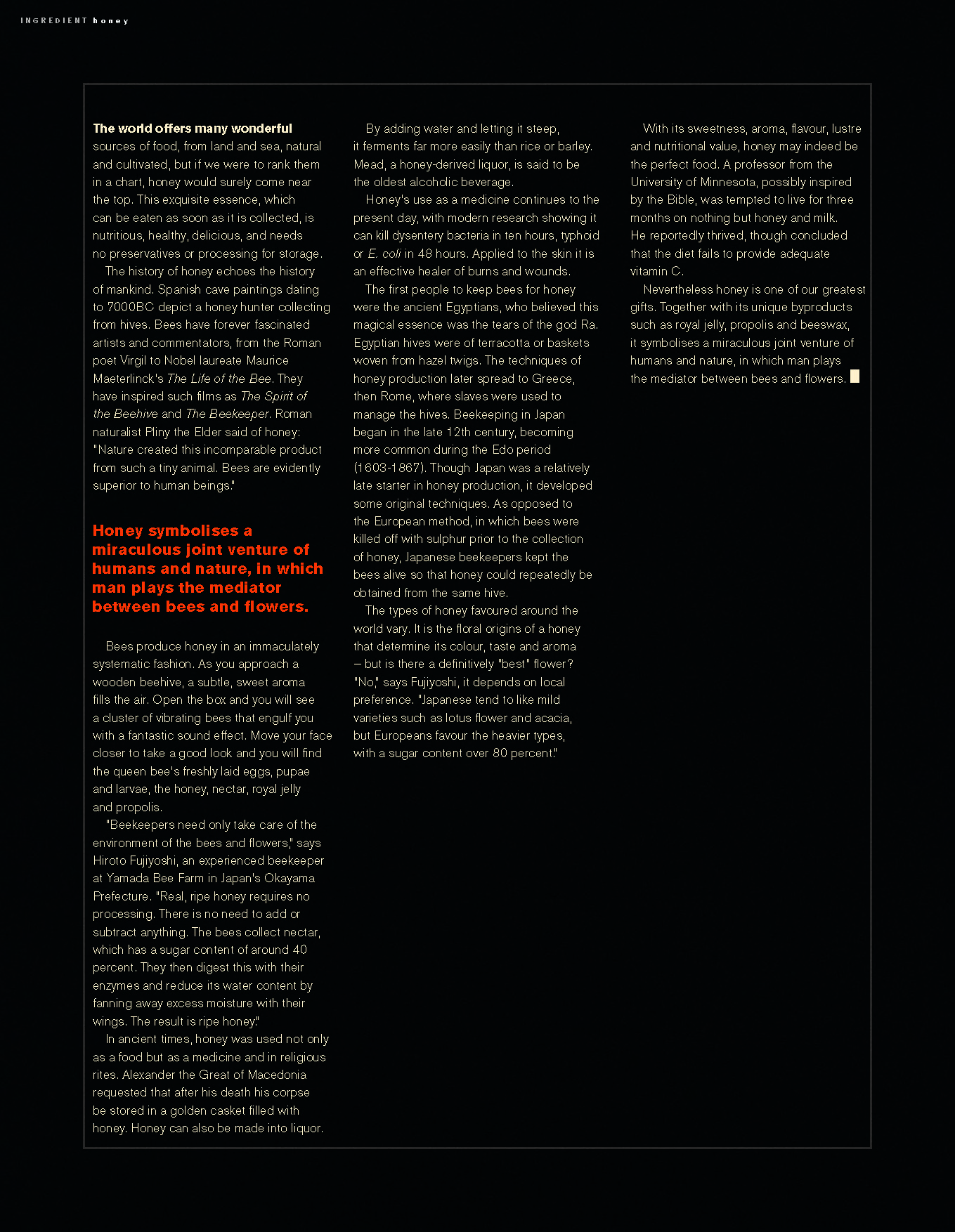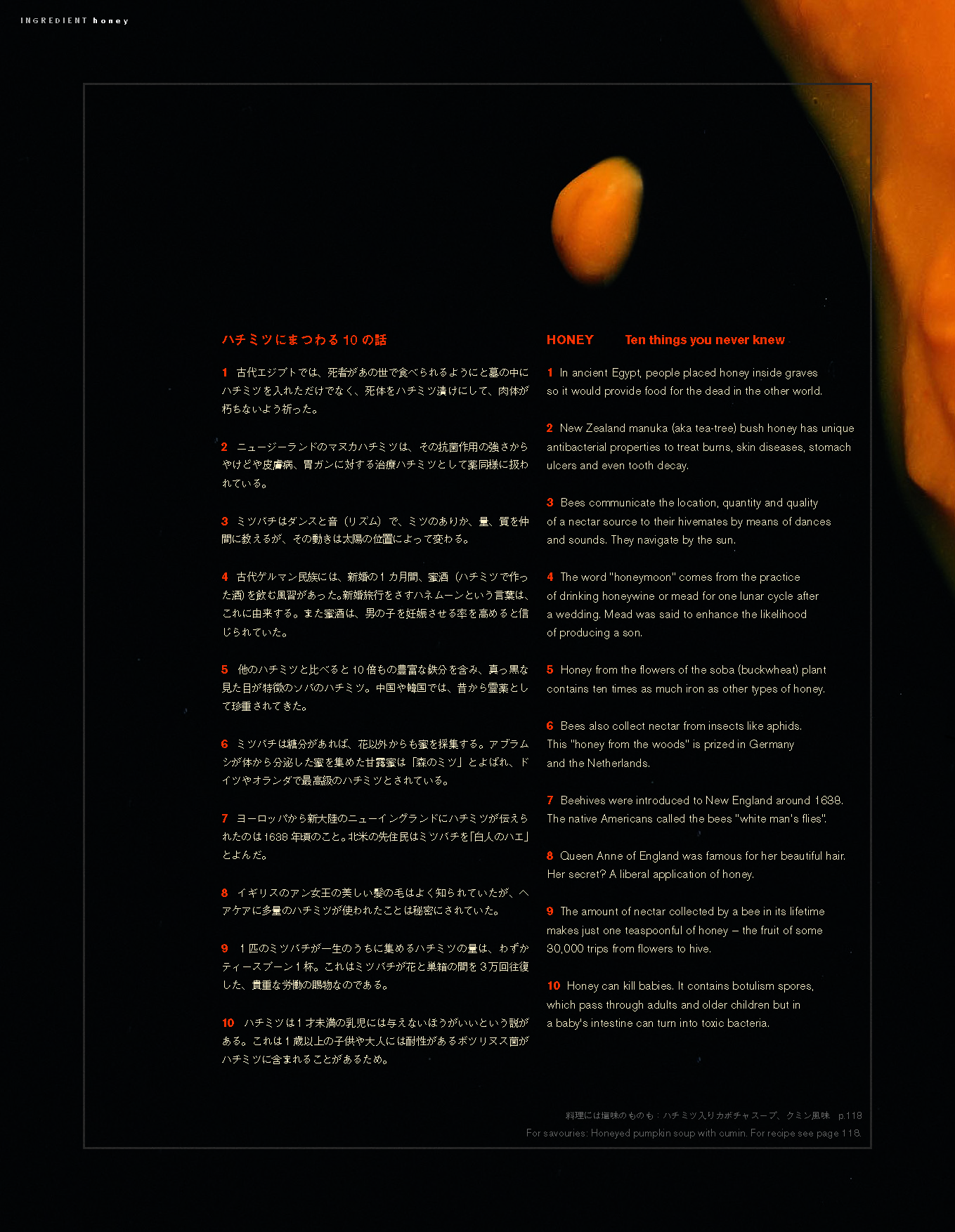Sweet Dreams
Eat Issue 6: Gender

This article was originally published in August 2001.
Honey has it all. A delicious, nutritious treat, a natural antiseptic and the basic ingredient for the drink of the gods... and it all comes ready-made, from the humble bee.
The world offers many wonderful sources of food, from land and sea, natural and cultivated, but if we were to rank them in a chart, honey would surely come near the top. This exquisite essence, which can be eaten as soon as it is collected, is nutritious, healthy, delicious, and needs no preservatives or processing for storage.
The history of honey echoes the history of mankind. Spanish cave paintings dating to 7000BC depict a honey hunter collecting from hives. Bees have forever fascinated artists and commentators, from the Roman poet Virgil to Nobel laureate Maurice Maeterlinck’s The Life of the Bee. They have inspired such films as The Spirit of the Beehive and The Beekeeper. Roman naturalist Pliny the Elder said of honey: “Nature created this incomparable product from such a tiny animal. Bees are evidently superior to human beings.”
“Beekeepers need only take care of the environment of the bees and flowers. Real, ripe honey requires no processing.”
Bees produce honey in an immaculately systematic fashion. As you approach a wooden beehive, a subtle, sweet aroma fills the air. Open the box and you will see a cluster of vibrating bees that engulf you with a fantastic sound effect. Move your face closer to take a good look and you will find the queen bee’s freshly laid eggs, pupae and larvae, the honey, nectar, royal jelly and propolis.
“Beekeepers need only take care of the environment of the bees and flowers,” says Hiroto Fujiyoshi, an experienced beekeeper at Yamada Bee Farm in Japan’s Okayama Prefecture. “Real, ripe honey requires no processing. There is no need to add or subtract anything. The bees collect nectar, which has a sugar content of around 40 percent. They then digest this with their enzymes and reduce its water content by fanning away excess moisture with their wings. The result is ripe honey.”
In ancient times, honey was used not only as a food but as a medicine and in religious rites. Alexander the Great of Macedonia requested that after his death his corpse be stored in a golden casket filled with honey. Honey can also be made into liquor.
By adding water and letting it steep, it ferments far more easily than rice or barley. Mead, a honey-derived liquor, is said to be the oldest alcoholic beverage.
Honey’s use as a medicine continues to the present day, with modern research showing it can kill dysentery bacteria in ten hours, typhoid or E. coli in 48 hours. Applied to the skin it is an effective healer of burns and wounds.
The first people to keep bees for honey were the ancient Egyptians, who believed this magical essence was the tears of the god Ra. Egyptian hives were of terracotta or baskets woven from hazel twigs. The techniques of honey production later spread to Greece, then Rome, where slaves were used to manage the hives.
Honey symbolises a miraculous joint venture of humans and nature, in which man plays the mediator between bees and flowers.
Beekeeping in Japan began in the late 12th century, becoming more common during the Edo period (1603-1867). Though Japan was a relatively late starter in honey production, it developed some original techniques. As opposed to the European method, in which bees were killed off with sulphur prior to the collection of honey, Japanese beekeepers kept the bees alive so that honey could repeatedly be obtained from the same hive.
The types of honey favoured around the world vary. It is the floral origins of a honey that determine its colour, taste and aroma — but is there a definitively “best” flower? “No,” says Fujiyoshi, it depends on local preference. “Japanese tend to like mild varieties such as lotus flower and acacia, but Europeans favour the heavier types, with a sugar content over 80 percent.”
With its sweetness, aroma, flavour, lustre and nutritional value, honey may indeed be the perfect food. A professor from the University of Minnesota, possibly inspired by the Bible, was tempted to live for three months on nothing but honey and milk. He reportedly thrived, though concluded that the diet fails to provide adequate vitamin C.
Nevertheless honey is one of our greatest gifts. Together with its unique byproducts such as royal jelly, propolis and beeswax, it symbolises a miraculous joint venture of humans and nature, in which man plays the mediator between bees and flowers.
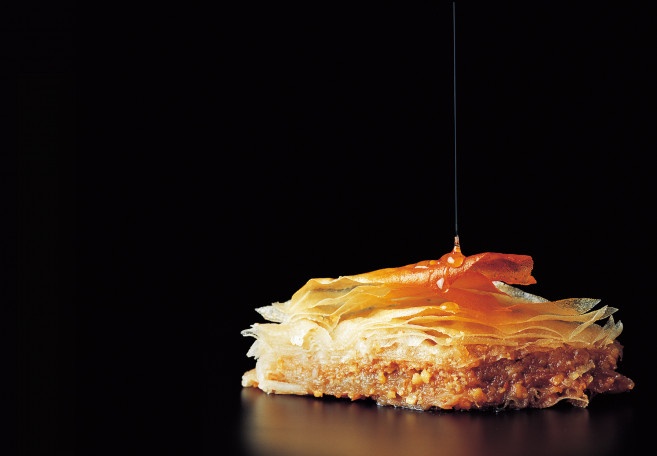
HONEY - Ten things you never knew
1. In ancient Egypt, people placed honey inside graves so it would provide food for the dead in the other world.
2. New Zealand manuka (aka tea-tree) bush honey has unique antibacterial properties to treat burns, skin diseases, stomach ulcers and even tooth decay.
3. Bees communicate the location, quantity and quality of a nectar source to their hivemates by means of dances and sounds. They navigate by the sun.
4. The word “honeymoon” comes from the practice of drinking honeywine or mead for one lunar cycle after a wedding. Mead was said to enhance the likelihood of producing a son.
5. Honey from the flowers of the soba (buckwheat) plant contains ten times as much iron as other types of honey.
6. Bees also collect nectar from insects like aphids. This “honey from the woods” is prized in Germany and the Netherlands.
7. Beehives were introduced to New England around 1638. The native Americans called the bees “white man’s flies”.
8. Queen Anne of England was famous for her beautiful hair. Her secret? A liberal application of honey.
9. The amount of nectar collected by a bee in its lifetime makes just one teaspoonful of honey — the fruit of some 30,000 trips from flowers to hive.
10. Honey can kill babies. It contains botulism spores, which pass through adults and older children but in a baby's intestine can turn into toxic bacteria.
Text: Kyoko Tsukada / Photo: Satomi Ono
